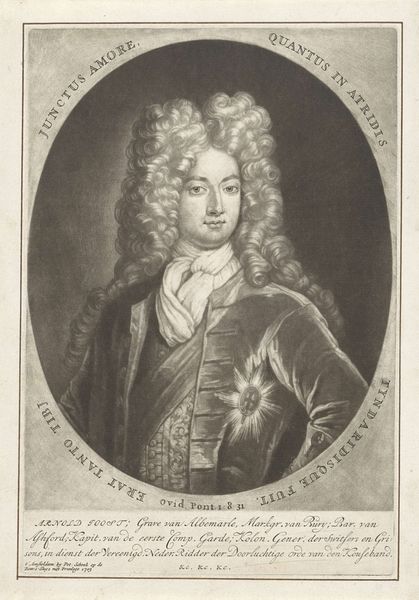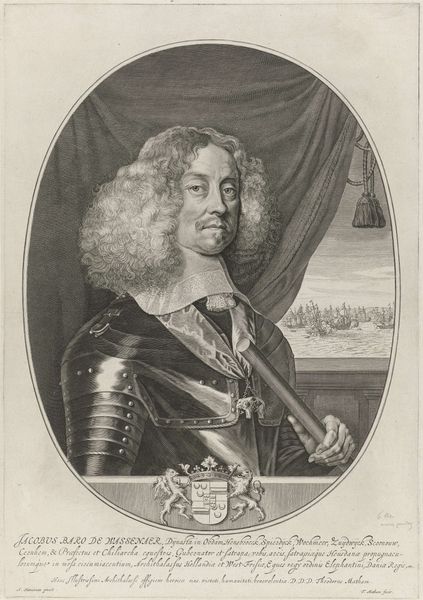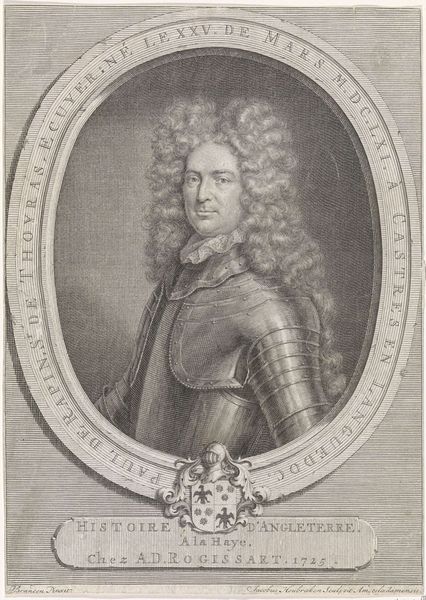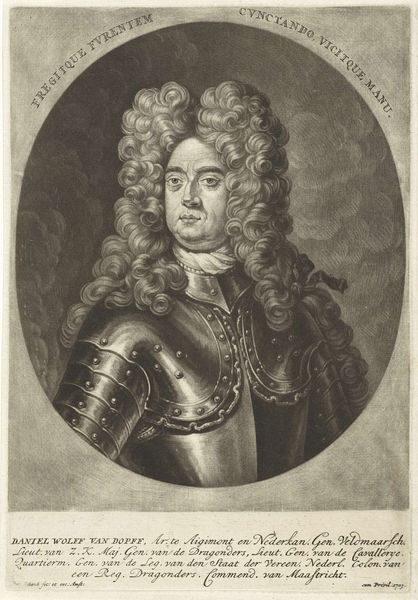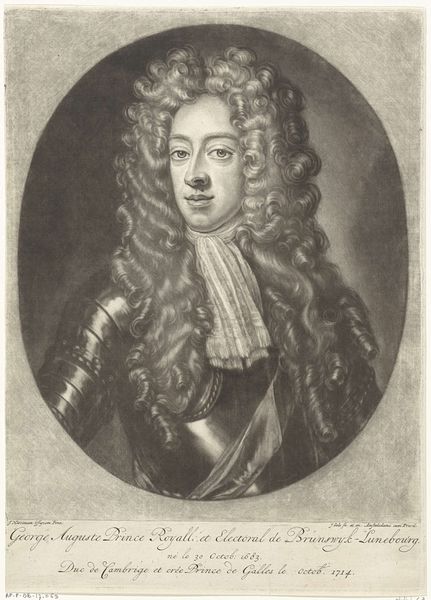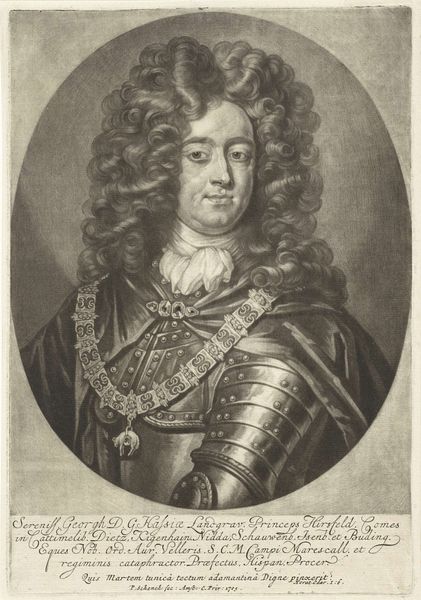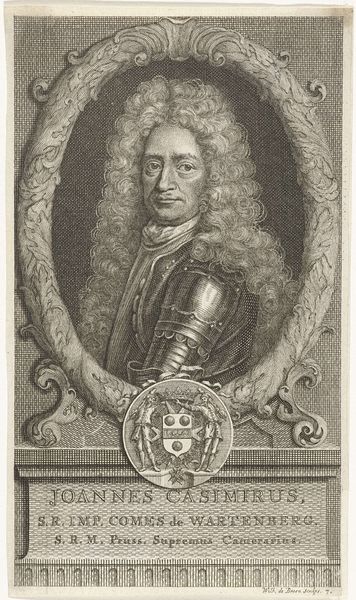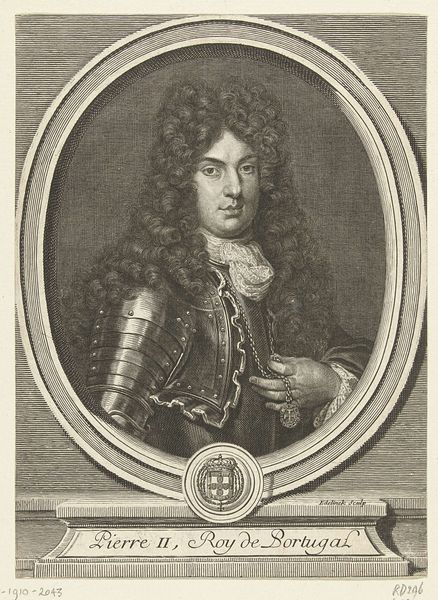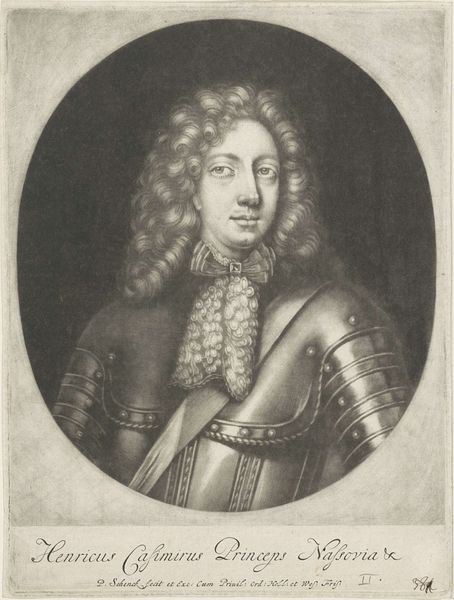
drawing, print, engraving
#
portrait
#
pencil drawn
#
drawing
#
baroque
# print
#
pencil sketch
#
charcoal drawing
#
pencil drawing
#
line
#
portrait drawing
#
engraving
Dimensions: height 351 mm, width 252 mm
Copyright: Rijks Museum: Open Domain
John Faber the younger created this portrait of Willem IV, Prince of Orange-Nassau, using mezzotint, a printmaking process, in 1733. Faber’s rendering reflects the social and political climate of the Dutch Republic during the 18th century, a period marked by aristocratic power and complex international relations. The portrait presents Willem IV, a member of the House of Orange, with symbols of status, reinforcing his noble identity. His elaborate wig and luxurious garments speak to the rigid social hierarchies of the time. Yet, the almost feminine quality of Willem's features and pose subtly challenge traditional notions of masculinity and power. While the portrait serves as a formal representation of the prince, it also acts as a cultural artifact, embodying the values, beliefs, and power dynamics of the time. It reflects the negotiation of identity and status within the frame of 18th-century European aristocracy.
Comments
No comments
Be the first to comment and join the conversation on the ultimate creative platform.

